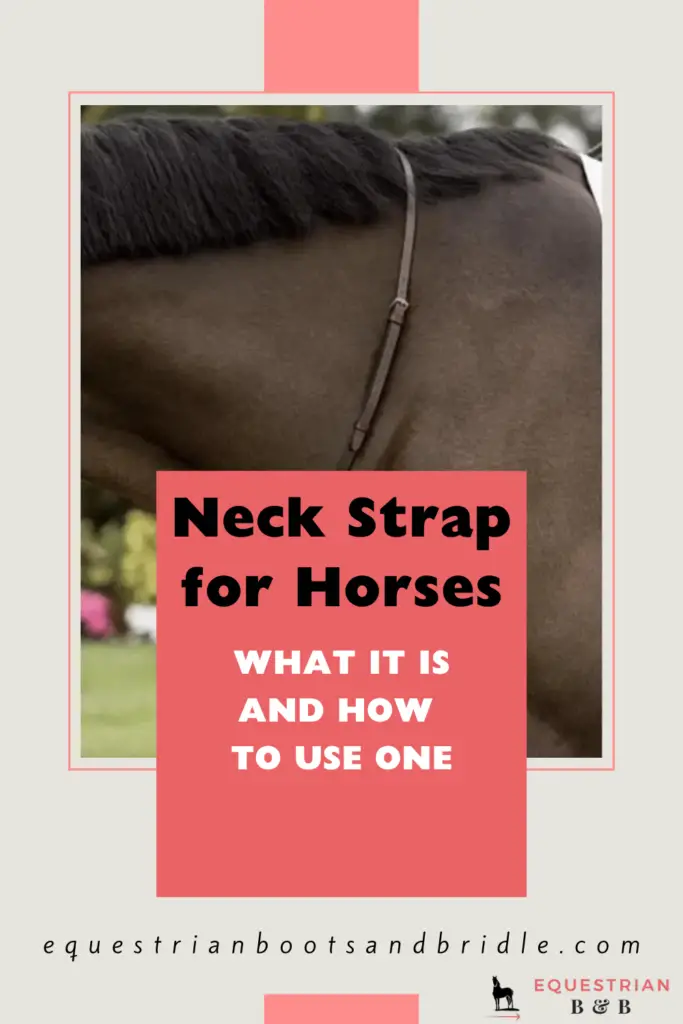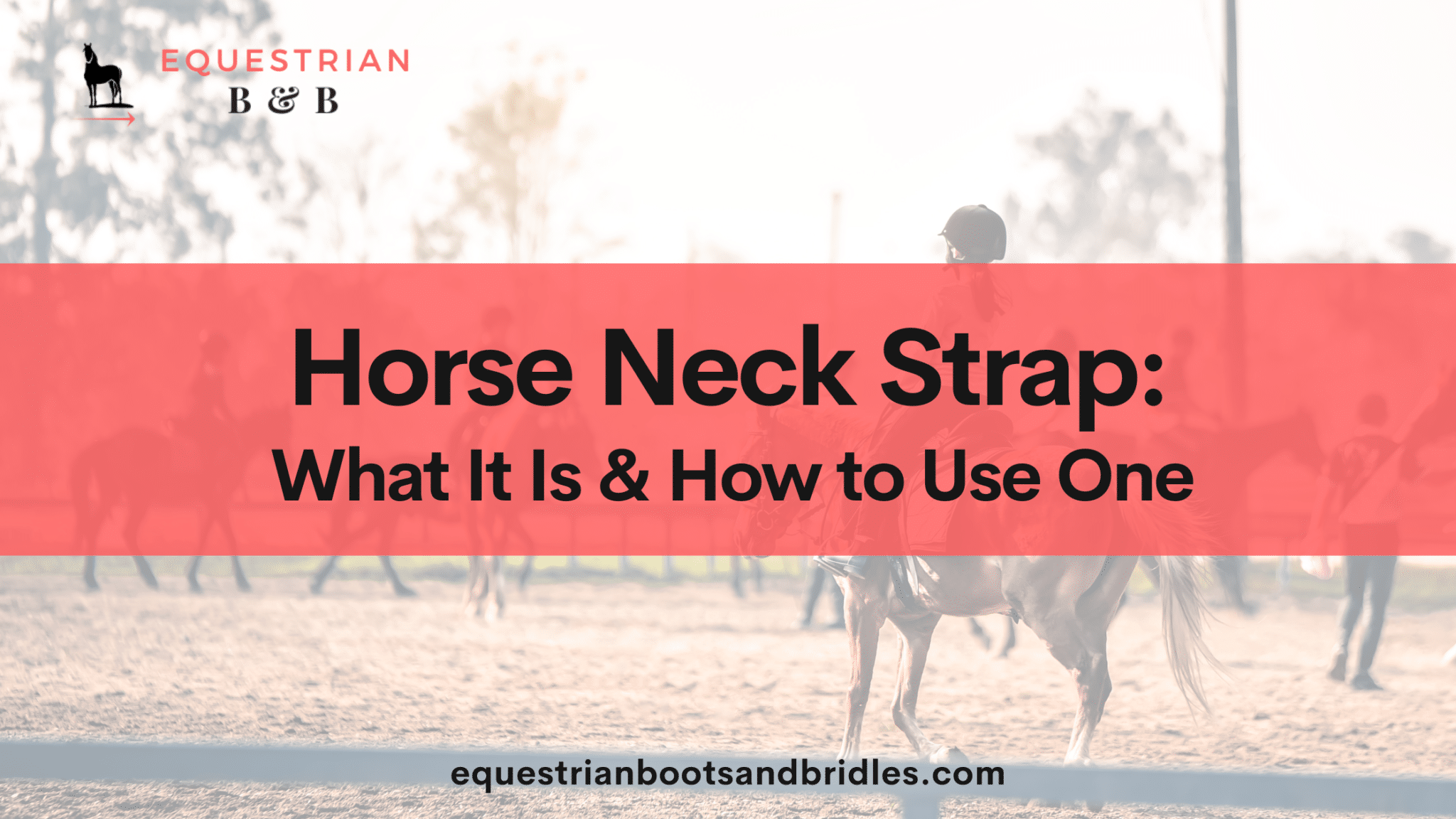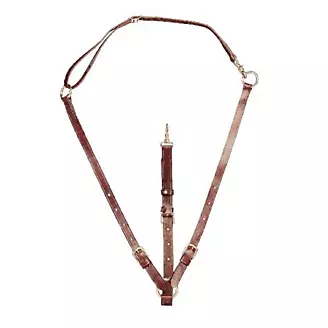What I recall of a neck strap is what I was made to endure as a beginner rider with an older lady who rode very prim and proper English style. She slapped a neck strap onto the pony and insisted I hang onto it when I felt like I would fall off (which she thought would happen all the time).
Later in life, as I began developing my own riding style and schooling techniques with my horses, I found myself using neck straps again but with a whole different end-game in sight: guidance and support for the horse.
So if you’ve ever wanted to know all about neck straps for horses, the why and how to use them, it’s time to tack up and add that “dreaded” neck strap for your horse’s sake!
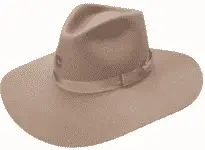
Pink Cowboy Hat

Cowgirl Tuff Don’t Fence Me In Jeans

Ariat Real Riding Jeans

Wrangler Q Baby Ultimate Riding Jeans
This article contains affiliate links, which means we may earn a commission if you decide to make a purchase.
What Is a Horse’s Neck Strap?
A neck strap for a horse is a strip of leather that is tied around the horse’s neck. The strap rests at the base of the horse’s neck where it joins their chest, close enough so the rider’s hands can reach and hold the strap while also holding the reins in a normal position. The strap should rest at the top of the withers and a few finger widths ahead of the saddle on the neck.
How Do You Use Horse Neck Straps?
The neck strap helps the rider balance when they hook one or two fingers of one or both hands through the leather strap. The rider still holds the reins at the same time, providing a type of anchoring presence with the security of the neck strap.
Benefits of a Neck Strap
The neck strap offers many benefits to riders (other than being an “oh shoot” strap to grab onto when things go wrong). A horse’s neck strap:
- Stabilizes the rider’s hands to prevent “sock washing” with hands rising and lowering involuntarily, which would pull in the horse’s mouth.
- Prevents the rider from hanging on the reins (and the horse’s mouth) when they are learning to jump or if they ride a forward horse.
- Provides a solid connection for the rider and horse to help block excessive forward energy on a hot horse (aka a sign to the horse to slow without getting busy in their mouth).
- Secures the rider’s center of balance when jumping with a horse.
- Reminds the rider to keep their hands in the lengthened and low position when they post the trot instead of trying to hold their hands in the air.
- Provides added security if the rider loses their balance and starts to fall off the horse.
Your Own Horse Neck Strap: To Buy or To Make?
So now you know what a neck strap does, the real question is whether you should make one or buy one. There are benefits to either option. Let’s see:
Buying a Neck Strap for Your Horse
A neck strap for horses comes in different lengths, depending on your horse’s size. The neck strap for a little school pony won’t fit a large Percheron horse or a thick-necked Friesian stallion.
So before you buy, measure your horse’s neck width, adding in a few finger widths for comfort.
Best Budget Nylon Horse Neck Strap
The Weaver Leather Nylon Neck Strap is ideal for those school ponies, but it can also size up for larger breed horses.
Features:
- Double-stitched nylon web strap
- Nickel-plated hardware
- Roller and pin buckle closure
Fine Leather Neck Strap
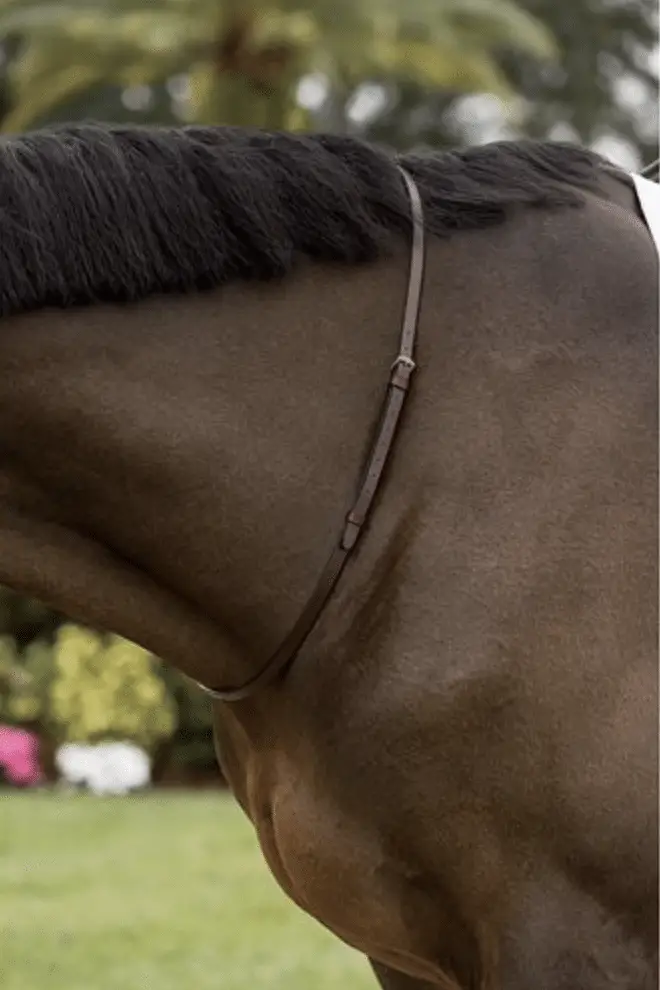
The Dover Saddlery® Leather Neck Strap is perfect for schooling and entering shows due to the fine quality leather used to make the strap.
Features:
- Fully adjustable
- Stainless steel hardware
Making a Neck Strap for Your Horse
If the purchase of a neck strap isn’t your idea of saving a quick buck, then making a neck strap can be easy-peasy. Most riders use an old stirrup leather to make their own neck strap, but the only disadvantage is that neck straps are usually slightly narrower than a stirrup leather.
Making a neck strap out of an old stirrup leather also means the strap won’t have a retainer cuff to keep the excess of the strap tucked away. I rely on an elastic band to secure the extra bit of leather, but you can also use anything from a cable tie to a bit of insulation tape.
If you don’t want to go the route of using stirrup leather, you can also use an old nylon webbed lead from a halter. Simply thread the buckle through the loop on the lead, then attach it back onto the body of the lead at the correct length.
Should you be at a Western tack shop, you can also opt for a neck rope, though this will, of course, not be legal if you enter an English show (nor will the nylon lead). Beginner shows may allow a leather stirrup during warm up classes.
More FAQs About Horse Neck Straps
How tight should a neck strap be on a horse?
To prevent the strap sagging or bumping the horse when you use it, the neck strap (aka horse riding strap) should be loose enough that you can slide a hand between the strap and the horse’s neck when it’s in the correct position.
Is a horse neck strap and a horse neck rope or cordeos the same thing?
A horse neck strap is a flat leather strap used for balancing and training, while a neck rope or cordeos is a braided or rolled leather strap that is used to ride the horse at liberty or without a bridle.
Conclusions on Neck Straps for Horses
A neck strap for your horse is not something to be ashamed of. It’s not the equestrian equivalent of “training wheels.” Having a neck strap fitted to your horse is a great way to hold your hands steady when schooling, and it also provides the horse with stability to your contact as they learn to hold themselves up.
Learn how to keep that new neck strap soft and flexible with my 101 guide to tack cleaning.
Pin the image below to your boards on Pinterest.
You can also follow along with me on Pinterest!
